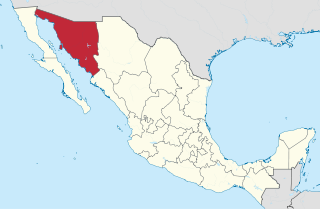
Sonora, officially Estado Libre y Soberano de Sonora, is one of the 31 states which, along with Mexico City, comprise the Federal Entities of Mexico. The state is divided into 72 municipalities; the capital city of which being Hermosillo, located in the center of the state. Other large cities include Ciudad Obregón, Nogales, San Luis Río Colorado, and Navojoa.

Cajemé / Kahe'eme, born and baptized José María Bonifacio Leyba Pérez, was a prominent Yaqui military leader who lived in the Mexican state of Sonora from 1835 to 1887. Kahe'eme (Cajemé) is originally a family clan name, and was also used by Fernando Leyba, the father of José María Bonifacio Leyba Pérez.
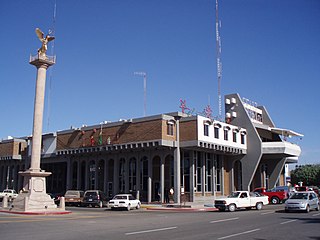
Navojoa is the fifth-largest city in the northern Mexican state of Sonora and is situated in the southern part of the state. The city is the administrative seat of Navojoa Municipality, located in the Mayo River Valley.

Mocorito is a small city within the Municipality of Mocorito in the Mexican state of Sinaloa.
Huarijio is a Uto-Aztecan language of the states of Chihuahua and Sonora in northwestern Mexico. It is spoken by around 2,100 Huarijio people, most of whom are monolinguals.
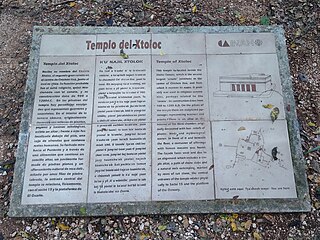
The Constitution of Mexico does not declare an official language; however, Spanish is the de facto national language spoken by over 99% of the population making it the largest Spanish speaking country in the world. Due to the cultural influence of the United States, American English is widely understood, especially in border states and tourist regions, with a hybridization of Spanglish spoken. The government also recognizes 63 indigenous languages spoken in their communities out of respect, including Nahuatl, Mayan, Mixtec, etc.

Indigenous peoples of Mexico, Native Mexicans or Mexican Native Americans, are those who are part of communities that trace their roots back to populations and communities that existed in what is now Mexico before the arrival of Europeans.

The Mayo or Yoreme are an indigenous group in Mexico, living in the northern states of southern Sonora, northern Sinaloa and small settlements in Durango.
The Huichol language is an indigenous language of Mexico which belongs to the Uto-Aztecan language family. It is spoken by the ethnic group widely known as the Huichol, whose mountainous territory extends over portions of the Mexican states of Jalisco, San Luis Potosí, Nayarit, Zacatecas, and Durango, mostly in Jalisco. United States: La Habra, California; Houston, Texas. Under the 2003 Law on Indigenous Language Rights, the indigenous languages of Mexico along with Spanish are recognized as "national languages".

The Cora are an indigenous ethnic group of North Western Mexico which live in the municipality El Nayar, Rosamorada, Ruiz, Tepic, in the Mexican state of Nayarit, Mezquital in Durango and in a few settlements in the neighboring state of Jalisco. They call themselves náayerite, whence the name of the present day Mexican state of Nayarit. They reside within a series of comunidades indígenas and ejidos. The 2000 Mexican census reported that there were 24,390 people who were members of Cora-speaking households, these being defined as households where at least one parent or elder claims to speak the Cora language. Of these 24 thousand, 67 percent (16,357) were reported to speak Cora, 17 percent were nonspeakers, and the remaining 16 percent were unspecified with regard to their language.
Cora is an indigenous language of Mexico of the Uto-Aztecan language family, spoken by approximately 30,000 people. It is spoken by the ethnic group that is widely known as the Cora, but who refer to themselves as Naáyarite. The Cora inhabit the northern sierra of the Mexican state Nayarit which is named after its indigenous inhabitants. A significant portion of Cora speakers have formed an expatriate community along the southwestern part of Colorado in the United States. Cora is a Mesoamerican language and shows many of the traits defining the Mesoamerican Linguistic Area. Under the General Law of Linguistic Rights of the Indigenous Peoples, it is recognized as a "national language", along with 62 other indigenous languages and Spanish which have the same "validity" in Mexico.
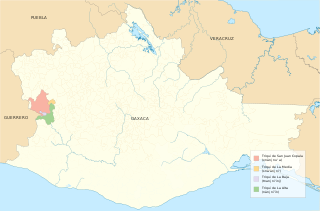
The Triqui, or Trique, languages are a family of Oto-Manguean spoken by 30,000 Trique people of the Mexican states of Oaxaca and the state of Baja California in 2007. They are also spoken by 5,000 immigrants to the United States. Triqui languages belong to the Mixtecan branch together with the Mixtec languages and Cuicatec.
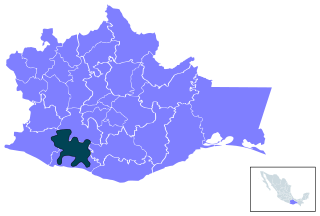
Chatino is a group of indigenous Mesoamerican languages. These languages are a branch of the Zapotecan family within the Oto-Manguean language family. They are natively spoken by 45,000 Chatino people, whose communities are located in the southern portion of the Mexican state of Oaxaca.

The Pame languages are a group of languages in Mexico that is spoken by around 12,000 Pame people in the state of San Luis Potosí. It belongs to the Oto-Pamean branch of the Oto-Manguean language family.
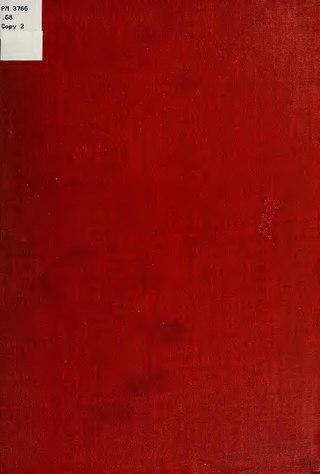
Ópata is either of two closely related Uto-Aztecan languages, Teguima and Eudeve, spoken by the Opata people of northern central Sonora in Mexico and Southeast of Arizona in the United States. It was believed to be dead already in 1930, and Carl Sofus Lumholtz reported the Opata to have become "Mexicanized" and lost their language and customs already when traveling through Sonora in the 1890s.
Sierra Totonac is a native American language complex spoken in Puebla and Veracruz, Mexico. One of the Totonacan languages, it is also known as Highland Totonac. The language is best known through the work of the late Herman “Pedro” Aschmann who produced a small dictionary and several academic articles on the language.
The Instituto Nacional de Lenguas Indígenas better known by its acronym INALI, is a Mexican federal public agency, created 13 March 2003 by the enactment of the Ley General de Derechos Lingüísticos de los Pueblos Indígenas by the administration of President Vicente Fox Quesada.
The National Institute of Indigenous Peoples is a decentralized agency of the Mexican Federal Public Administration. It was established on December 4, 2018, though the earliest Mexican government agency for indigenous matters was created in 1948. It is headquartered in Mexico City and headed by Adelfo Regino Montes.

Acaxochitlán is one of the 84 municipalities of the state of Hidalgo, in central-eastern Mexico. The municipality covers an area of 226.1 km². As of 2005, the municipality had a total population of 34,892. Acaxochitlan has three languages; Nahuatl, Spanish, and Otomi.
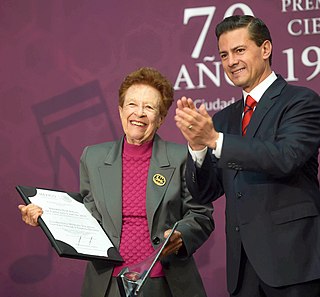
Yolanda Lastra de Suárez is a Mexican linguist specializing in the descriptive linguistics of the indigenous languages of Mexico. She obtained her PhD degree in 1963 from Cornell University, her dissertation written under the guidance of Charles F. Hockett treating the syntax of Cochabamba Quechua in Bolivia. She was married to Argentinian linguist Jorge A. Suárez (1927-1985).














